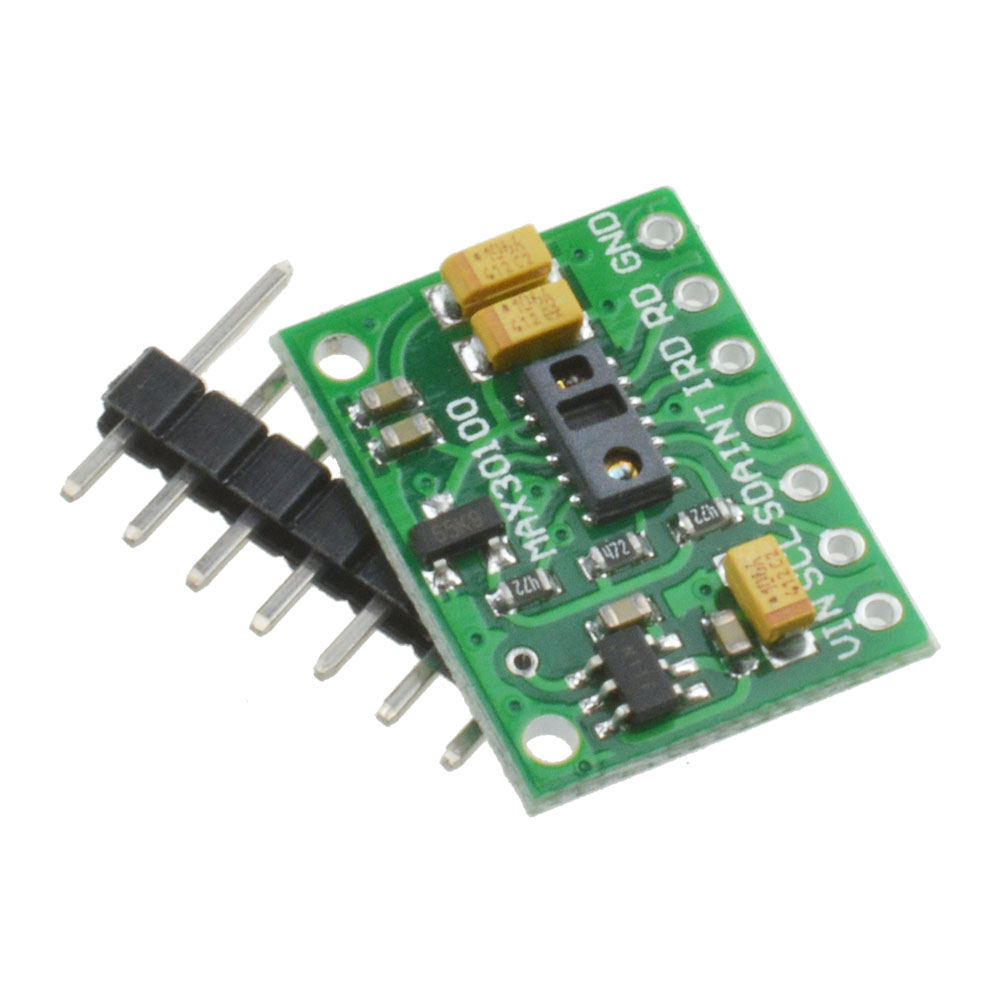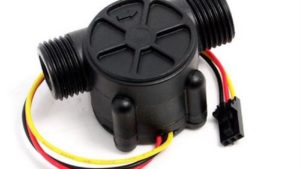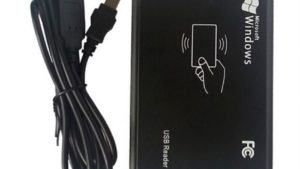Description
Heart Rate click carries Maxim’s MAX30100 integrated pulse oximetry and heart-rate sensor. Developers of end-user applications should note that the readings can be negatively impacted by excess motion and changes in temperature. Also, too much pressure can constrict capillary blood flow and therefore diminish the reliability of the data. A programmable INT pin is also available to use.
Specification:
- 3.3V power supply.
- Optical sensor: IR and red LED combined with photodetector
- Measures absorbance of pulsing blood
- I2C interface plus INT pin
- 3.3V power supply
Getting started with the MAX30100 Pulse Oximeter Heart Rate Sensor Development Board
Now let’s create a heart rate monitor where the values are displayed through the serial port.
Step1: Hardware required
Step2: Connecting the Hardware
Connect the MAX30100 Pulse Oximeter Heart Rate Sensor to the arduino UNO as shown below,
Just follow this wiring setup
| Purple MAX30100 Module | Arduino UNO/Nano |
| VIN | 5V |
| GND | GND |
| SCL | A5 |
| SDA | A4 |
| INT | D2 |
Step3: Setting up the library
so before reading the MAX30100 Pulse Oximeter Heart Rate Sensor we must have the library, so you can download it here . install the library by extracting that zipped file in the library folder as shown below .

Step4: Upload the sample sketch
here’s an example sketch:
#include <Wire.h>
#include “MAX30100_PulseOximeter.h”
#define REPORTING_PERIOD_MS 1000
// PulseOximeter is the higher level interface to the sensor
// it offers:
// * beat detection reporting
// * heart rate calculation
// * SpO2 (oxidation level) calculation
PulseOximeter pox;
uint32_t tsLastReport = 0;
// Callback (registered below) fired when a pulse is detected
void onBeatDetected()
{
Serial.println(“Beat!”);
}
void setup()
{
Serial.begin(115200);
Serial.print(“Initializing pulse oximeter..”);
// Initialize the PulseOximeter instance
// Failures are generally due to an improper I2C wiring, missing power supply
// or wrong target chip
if (!pox.begin()) {
Serial.println(“FAILED”);
for(;;);
} else {
Serial.println(“SUCCESS”);
}
// The default current for the IR LED is 50mA and it could be changed
// by uncommenting the following line. Check MAX30100_Registers.h for all the
// available options.
// pox.setIRLedCurrent(MAX30100_LED_CURR_7_6MA);
// Register a callback for the beat detection
pox.setOnBeatDetectedCallback(onBeatDetected);
}
void loop()
{
// Make sure to call update as fast as possible
pox.update();
// Asynchronously dump heart rate and oxidation levels to the serial
// For both, a value of 0 means “invalid”
if (millis() – tsLastReport > REPORTING_PERIOD_MS) {
Serial.print(“Heart rate:”);
Serial.print(pox.getHeartRate());
Serial.print(“bpm / SpO2:”);
Serial.print(pox.getSpO2());
Serial.println(“%”);
tsLastReport = millis();
}
}
Step5: Testing the circuit
open your serial monitor by clicking on the icon in the right top corner(like search icon).If you followed the wiring diagram and uploaded this sketch to your Arduino, the red LED on the board should light up and you will see this on the serial monitor:






